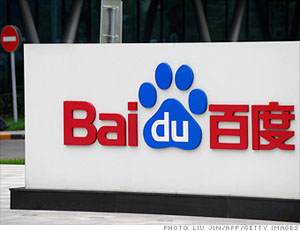5 tips to success in your SEO in China
SEO in China has become part of any decent digital marketing strategy these past few years to improve your brand awareness, as well as your e-reputation. In a country where there is a 45% internet penetration rate and where trust is everything, there is little room for something else. You must know SEO on Baidu…or on 360 to be successful at doing business in China.
Use the right strategy
Before starting anything in SEO you must adopt the right strategy which is:
 Study the business of your customers, their companies and how good is the market
Study the business of your customers, their companies and how good is the market- Find the most relevant and cost effective keywords
- Know your competitors as well as you know yourself
- Do on-site optimization
- Write high added value content
- Be smart when you want to do link-building
- Look closely at the results, get the most out of it
- Create a report that will give you, over time an evolution of your website, giving you general trends, and efficient ways to do SEO.
Now let’s delve deeper into the specifics.
Know the search engine you will do SEO for
With 70% market share, it is Baidu we are talking about here, and also more and more, the second most used search engine in China, 360.com. Luckily, both work the same way, which is very different from Google. So forget Google. You’re on Baidu now.
You have to have a website hosted either in Hong Kong or Mainland China.
Since the lovely Great Firewall of China has been erected and an increasing number of foreign websites have been blocked, the best way to stay in the competition and stand out is to have a Website in China or at least using test firewall of China. At least, this will allow you to avoid some severe penalties given to foreign-hosted website because the Chinese government prefers to be able to reach any website visible in China and so does Baidu. As a consequence, if you are not in China you are penalized on the SERP and your loading time is slow which will have you lose an important part of your traffic. Why is that? Simply put, Chinese customers are impatient, and they have the choice. So if they have to wait for too long, they simply go elsewhere… And that’s how you lose a customer.
Different cultures, different website. Translation is not enough!
 Being hosted in China is far from enough, you need to have a website that matches the standards Chinese customers are used. What are they?
Being hosted in China is far from enough, you need to have a website that matches the standards Chinese customers are used. What are they?
This is the main page, as you can see in the screenshot of Tmall, a B2C e-commerce platform. You have a very long main page (see the scrollbar on the right). On it, people can see the basic information they need to see whether they are interested in going any further or if they simply want to go elsewhere.
You have the brands, available, the hot deals and so on, visible at a glance. Finally, everything is set by categories so that they can quickly access the type of wares they want.
They also have quick access to a staff member that will answer any of their questions. This one is a very important point when dealing with Chinese: they want to discuss with the person they are doing business with.
You must choose the right keywords.
Paraphrasing a movie I recently watched, you’re not in the West anymore. Web surfing habits are very different, and so are the Chinese netizen’s habits when they want to find more information about something. This something could be your brand.
While westerners will prefer using short keywords and browse through the list of website, Chinese prefer to use longer queries made up of several keywords. Therefore, the trick here is to determine what sequences are the most appropriate to your brand, to the services you offer for instance.
Conclusion
This is just the tip of the iceberg, you can learn more there if you wish to do your SEO, it is a very cost-efficient method that can bring you fascinating ROI after the campaign is set on the right track. Indeed, an SEO campaign takes the time to go away but once it has done so it is worth it!





